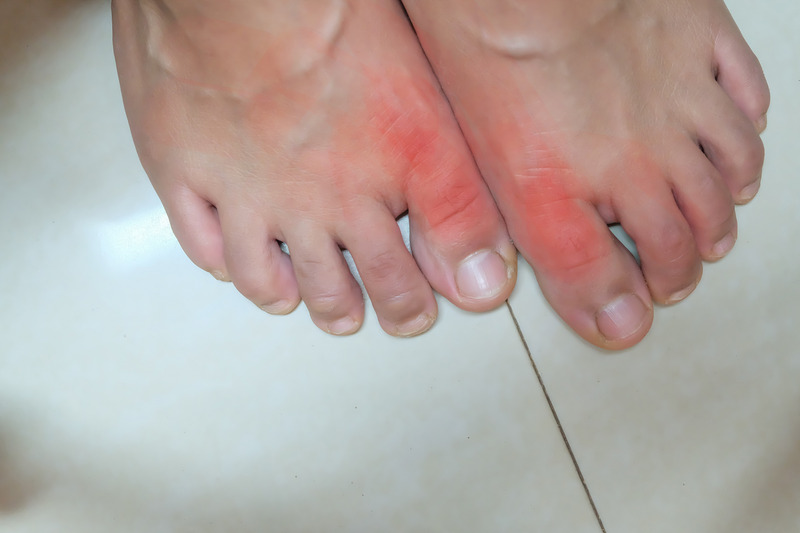
What are purines?
Purines are natural water-soluble compounds found in the body. They essentially contain carbon and nitrogen that undergo digestion and produce uric acid. Now, the buildup of needle-like uric acid crystals can lead to harmful joint disorders. The most common ones among them are a variant of arthritis known as gout and kidney stones. So, does this mean purines are bad for your health and are there steps that can be taken to prevent the accumulation of purines? Read on to find out more about what are purines!
Understanding the different types of purines
The purines are broadly classified into two types, and these are explained below:
1. Exogenous Purines
The purines that enter into your body through foods are termed exogenous purines. Like any other compound found in your diet, these purines are digested by the body.
2. Endogenous Purines
Over two-third of the purines that are present in a healthy human body are endogenous. This means the compound gets processed by the cells. For example, during renewal, the damaged or dying cells secrete purines that should be processed by the body.
How purines lead to hyperuricemia?
When purines go out of proportion with the body’s processing ability, high levels of uric acid become a part of the bloodstream, such a condition is stated as hyperuricemia. If not treated on time, this can affect your joints and kidney to a greater extent. Unfortunately, most people with hyperuricemia have no symptoms at all until the condition worsens.
While having a low-uric acid level in the bloodstream is normal, the levels might get too high because of:
- Consuming beverages and foods high in purines.
- Kidney’s inability to filter and flush off the uric acids from the body.
- Excessive production of uric acid (genetic cause)
During hyperuricemia, the uric acid deposits in joints, and ends up becoming uric crystals (urate crystals). The crystals cause irritation and influence immune system response that results in inflammation. Later, it causes swelling, redness, and tenderness leading to a gout attack.
Medical conditions that are related to hyperuricemia
Apart from gout, hyperuricemia is responsible for the development of many other medical conditions including:
1. Hypertension
The high levels of uric acid due to purines are often linked with hypertension (high blood pressure). Moreover, some medications that are meant for treating high blood pressure levels tend to elevate the levels of uric acid in the body.
2. Type 2 Diabetes
Hyperuricemia with no symptoms is often related to type 2 Diabetes. In fact, several studies have found that uric acid levels alter the functioning of the pancreas, thus worsening its resistance against insulin.
3. Chronic Kidney Disease
As mentioned earlier, the formation of uric acid crystals can lead to kidney stones. Most of the experts suggest that over 14% of people who are a victim of gout, end up suffering from kidney stones as well.
4. Cardiac Disease
Congestive heart failure (heart attack) and coronary artery diseases are also connected with hyperuricemia. This is because an enzyme that breaks down purines to form uric acid is associated with the development of cardiac diseases.
Ways to lower purines in your body
There are two ways that can be implemented for lowering the levels of purines in your body.
1. Switching to Low Purine Foods
Almost all foods contain purines, but some of them have the compound in higher concentration as compared to others. So, a good practice is to switch to a low purine diet by avoiding:
- Foods high in sugars, primarily those that contain fructose, syrups and sodas.
- Meat, sweetmeats such as game meat, and liver should be avoided.
- Seafood like herring, anchovies, and scallops and;
- Beverages that contain alcohol.

2. Using the right medication
Apart from making the essential changes to your diet, you need to use the right medication to prevent and control the effects of high levels of purines. For this, do contact your healthcare professional, discuss your medical history and then consider the medicines that will be suitable for you.
Suggested article: Top 7 Gout Medication – List of Medicines Used to Treat Gout
Conclusion
Purines are not lethal for your body until they are found at a balanced level. Hence, limit the consumption of foods that have a high concentration of purines and take prescribed medications to save yourself from the discomfort and pain of hyperuricemia and its associated diseases.
Suggested articles:
– How to Reduce Uric Acid? – 12 Ways to Kill Uric Acid
– What Foods Are High in Purines? – Avoid These 6 Foods
– 15 Triggers of Gout – What Causes Gout?
– What Does Gout Feel Like? – Get The Full Insights
– How Do You Get Gout? – 10 Causes & Risk Factors
– Top 8 Complications of Gout – What to Expect?
– How Long Does a Gout Attack Last? – All You Need to Know
The Gout Eraser™: The all-natural guide for permanent gout removal
The Gout Eraser™ is a short, to the point guide on how to reverse gout symptoms without ever leaving your home. The guide goes into extensive detail on exactly what you need to do to safely, effectively and permanently get rid of gout, and you are GUARANTEED to see dramatic improvements in days if not hours.
To learn more about The Gout Eraser™ system, check out the following free video presentation: The Gout Eraser™





